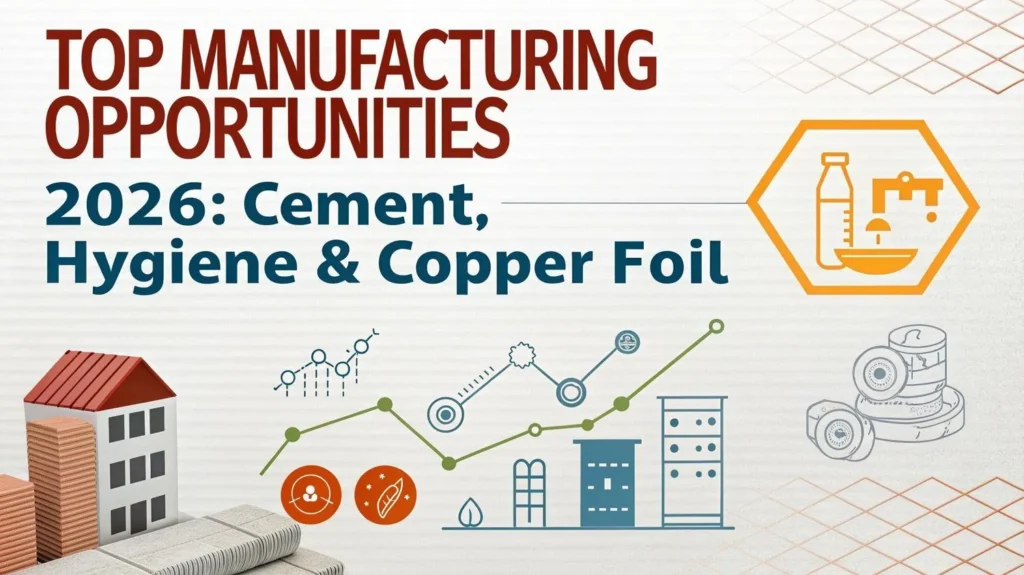
A cold storage facility plays a crucial role in maintaining the quality and extending the shelf life of perishable commodities such as fruits, vegetables, dairy, seafood, meat, and pharmaceuticals. Because of changing consumption habits and increasing urbanization, the demand for reliable cold storage infrastructure has been rising consistently. A cold storage detailed project is therefore considered a highly profitable and strategic business opportunity for entrepreneurs and investors alike.
This guide aims to provide a comprehensive overview of how to prepare and implement a cold storage detailed project. The setup process, required infrastructure, technologies involved, and potential returns will be covered. Transitioning from planning to execution requires structured analysis, sound investment planning, and practical implementation strategies.
Cold Storage Setup and Business Scope
In the context of agricultural marketing and supply chain management, cold storages are indispensable. Not only do they help in reducing wastage of perishable products, but they also allow farmers and traders to realize better prices by storing produce until market demand improves.
A cold storage detailed project involves the design and execution of a facility equipped with refrigeration units to maintain products at desired temperatures. While various models exist (e.g., multi-commodity, single-commodity, frozen and chilled storage), the selection depends heavily on the business model, region, and commodities targeted.
See Also : Smart Investment Guide
Project Planning and Market Analysis
To begin with, a thorough feasibility study should be conducted. Demand-supply gaps in the area, local agricultural output, consumption patterns, and transportation facilities must be analyzed. Additionally, the location should be chosen strategically to ensure easy access to farms, wholesale markets, and retail zones.
Furthermore, market potential must be assessed for products such as potatoes, onions, apples, fish, milk, vaccines, or ice creams. These products each require different temperature and humidity conditions. A successful cold storage detailed project must accommodate these variables in its infrastructure plan.
It has also been observed that government policies and subsidies play a crucial role in the feasibility of such projects. Hence, all relevant government schemes, subsidy structures, and credit facilities must be reviewed and incorporated into the business model.
Infrastructure and Technology
A standard cold storage unit consists of insulated chambers, ammonia or freon-based refrigeration systems, temperature control units, and ventilation. The design and size of the cold rooms are decided based on storage capacity, ranging from 500 MT to 10,000 MT or more.
Modular design practices are being preferred nowadays, as they allow for phased expansion. Moreover, pre-engineered buildings (PEBs) and solar backup systems are being integrated to enhance efficiency and reduce energy costs.
Automated systems such as data loggers, remote monitoring tools, and automated racking have been deployed in advanced facilities. Energy-efficient compressors, phase change materials (PCMs), and thermal energy storage systems can help lower the cost of operations and improve sustainability metrics.
Cost Estimation and Financial Projections
A detailed financial plan must be included in the cold storage detailed project report. The capital cost typically includes land acquisition, construction, machinery, insulation, and electrical installations. Depending on size and location, capital investment may range from ?1.5 crore to ?10 crore or more.
The following cost components should be covered:
-
Land & site development
-
Building construction (PEB or RCC)
-
Refrigeration and control systems
-
Electrical panels and generators
-
Cold storage racks and handling equipment
-
Utilities and HVAC systems
-
Labor quarters, admin blocks, and security systems
Besides the fixed capital, working capital for electricity, manpower, fuel, packaging, and logistics must be estimated. Projections should include revenue inflows based on rental models (per MT per month), logistics service charges, and value-added services like pre-cooling or ripening chambers.
An ROI analysis, break-even period, and internal rate of return (IRR) should be calculated. Typically, well-managed facilities achieve break-even in 3 to 5 years.
Licensing, Approvals, and Standards
Before setting up, entrepreneurs must obtain all necessary permissions and clearances. These include:
-
Land use conversion and building plan approval
-
Pollution Control Board clearance
-
FSSAI license (for food storage)
-
Factory license and labor compliance
-
Electricity load sanction
-
Fire and safety certification
In addition, adherence to BIS and ISO standards for cold storage facilities must be ensured. The use of food-grade, moisture-resistant insulation materials is mandatory.
Standards such as IS 11546, IS 661, and international food safety norms must be followed during construction and operations. Complying with these helps ensure long-term sustainability and client trust.
Government Subsidies and Financial Assistance
Support from government agencies like NABARD, APEDA, MoFPI, and MSME departments has made cold storage investment easier. Capital subsidies of 35–50% of the project cost can be availed, depending on region and storage type.
Soft loans and interest subvention schemes have also been announced under the Pradhan Mantri Kisan SAMPADA Yojana (PMKSY) and Integrated Cold Chain projects. Moreover, SIDBI, NSIC, and nationalized banks offer term loans and working capital loans at attractive interest rates.
Entrepreneurs are encouraged to include all such incentives and schemes in the cold storage detailed project report, as they enhance bankability and reduce financial burden.
Operations, Maintenance & Business Model
Post-construction, operations must be handled by trained technical staff. Refrigeration engineers, plant operators, store managers, and QA personnel are required to manage operations smoothly. Energy consumption, downtime, temperature calibration, and quality of stored produce must be monitored daily.
Maintenance schedules for compressors, sensors, and electrical units must be followed rigorously. AMC (Annual Maintenance Contracts) with equipment providers are highly recommended.
As far as the business model is concerned, revenue can be generated by:
-
Charging rental based on per MT/day or per pallet
-
Offering refrigerated logistics (reefer vans)
-
Ripening services (especially for bananas and mangoes)
-
Value-added services like grading, sorting, and vacuum cooling
Additionally, many facilities are partnering with e-commerce grocery chains, food exporters, and pharma companies for dedicated storage contracts.
Risk Management and Mitigation
Even though the cold storage business is promising, it is not without risks. Power outages, equipment failure, temperature excursions, and product spoilage are major concerns. Therefore, backup power (DG sets or solar), redundant cooling units, and quality audits are essential.
Insurance coverage for fire, theft, machinery breakdown, and product liability must be included. Climate change and erratic supply from farms can also affect utilization rates. Therefore, diversification into multi-commodity storage is advised.
Furthermore, digital tools like IoT sensors, cloud analytics, and real-time inventory tracking should be adopted for efficient management and early detection of risks.
Marketing and Client Acquisition
Even a technically advanced facility may underperform if not supported by aggressive marketing. Hence, promotional strategies must be planned in advance. Outreach programs must be organized for FPOs (Farmer Producer Organizations), traders, exporters, and agri-tech companies.
Participation in trade fairs, cold chain seminars, and exhibitions can boost visibility. Tie-ups with agriculture mandis, cooperative societies, and food processing industries can help in securing long-term storage contracts.
Moreover, digital platforms and B2B marketplaces can be utilized to offer storage space on rental or pay-per-use models.
Future Trends and Opportunities
With the increasing demand for safe and traceable food logistics, the cold storage industry is undergoing rapid transformation. The focus is shifting toward end-to-end cold chain networks integrating pre-cooling, warehousing, and last-mile delivery.
AI-based inventory prediction, blockchain for product traceability, and mobile apps for booking cold space are emerging trends. Additionally, containerized mobile cold storages are gaining traction in rural areas.
Environmentally friendly refrigerants and solar-powered units are also being adopted to reduce the carbon footprint of cold storage facilities.
The opportunities are immense for those who invest strategically and adopt innovation-driven business models.
See Also : H2O2 Manufacturing Plant
Conclusion
A cold storage detailed project holds immense promise for entrepreneurs aiming to venture into agri-infrastructure or supply chain management. When structured properly, supported by detailed financial analysis, equipped with efficient technology, and complemented by government incentives, such a project can offer high returns with minimal risks. Moreover, the increasing demand for food preservation, logistics, and pharmaceutical storage ensures long-term growth and sustainability for this business. Therefore, investing in a cold storage plant can be considered a future-proof opportunity that aligns with both economic and environmental objectives.





